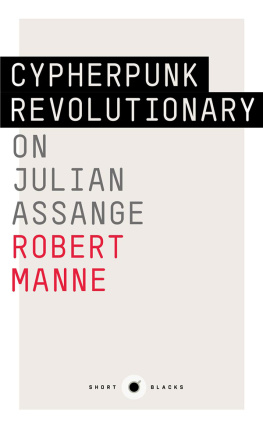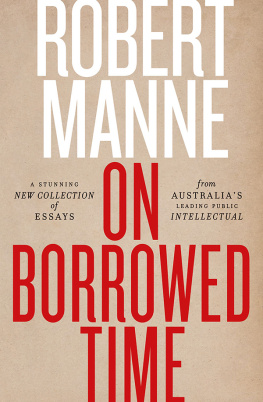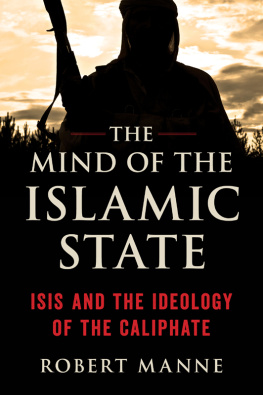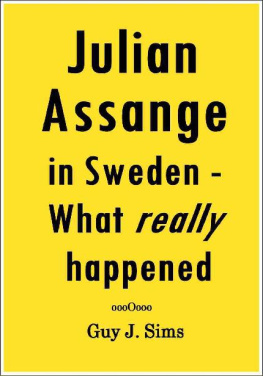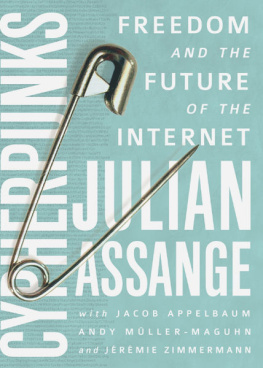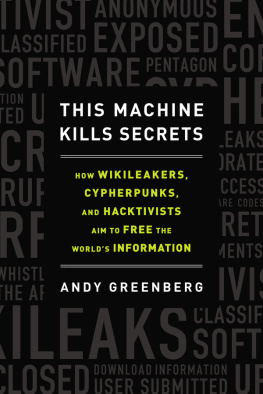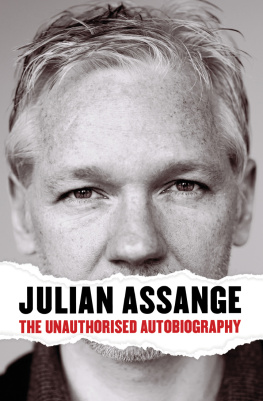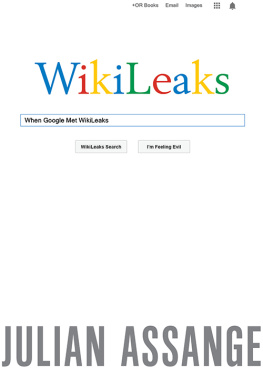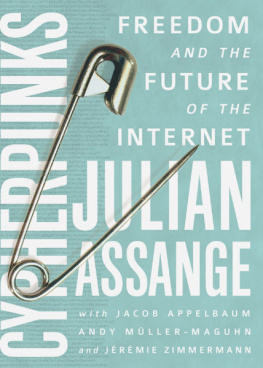SHORT BLACKS are gems of recent Australian writing brisk reads that quicken the pulse and stimulate the mind.
SHORT BLACKS
1 Richard Flanagan The Australian Disease:
On the decline of love and the rise of non-freedom
2 Karen Hitchcock Fat City
3 Noel Pearson The War of the Worlds
4 Helen Garner Regions of Thick-Ribbed Ice
5 John Birmingham
The Brave Ones: East Timor, 1999
6 Anna Krien Booze Territory
7 David Malouf The One Day
8 Simon Leys Prosper: A voyage at sea
9 Robert Manne
Cypherpunk Revolutionary: On Julian Assange
10 Les Murray Killing the Black Dog
11 Robyn Davidson No Fixed Address
12 Galarrwuy Yunupingu
Tradition, Truth and Tomorrow
Published by Black Inc.,
an imprint of Schwartz Publishing Pty Ltd
3739 Langridge Street
Collingwood VIC 3066 Australia
www.blackincbooks.com
Copyright Robert Manne 2011
Robert Manne asserts his right to be known as the author of this work.
First published in the Monthly, March 2011.
This edition published 2015.
ALL RIGHTS RESERVED.
No part of this publication may be reproduced, stored in a retrieval system, or transmitted in any form by any means electronic, mechanical, photocopying, recording or otherwise without the prior consent of the publishers.
National Library of Australia Cataloguing-in-Publication entry :
Manne, Robert (Robert Michael), 1947 author.
The cypherpunk revolutionary : on Julian Assange / Robert Manne.
9781863957717 (paperback) 9781925203554 (ebook)
Short blacks ; no.9.
Assange, Julian. WikiLeaks (Organization) Publishers and publishing. Web publishing. Leaks (Disclosure of information)
070.57973
Cover and text design by Peter Long.
ROBERT MANNES many books include Making Trouble and The Words That Made Australia (as co-editor). He is the author of three Quarterly Essays, In Denial, Sending Them Home and Bad News.
L ess than twenty years ago Julian Assange was sleeping rough. Even a year ago hardly anyone knew his name. Today he is one of the best-known and most-respected human beings on earth. Assange was the overwhelming winner of the popular vote for Time magazines Person of the Year and Le Mondes less politically correct Man of the Year. If Rupert Murdoch, who recently turned eighty, is the most influential Australian of the post-war era, Julian Assange, who will soon turn forty, is undoubtedly the most consequential Australian of the present time. Murdochs importance rests in his responsibility for injecting, through Fox News, the poison of rabid populist conservatism into the political culture of the United States; Assanges in the revolutionary threat that his idea of publishing damaging documentary information sent by anonymous insiders to WikiLeaks poses to governments and corporations across the globe.
Julian Assange has told the story of his childhood and adolescence twice, most recently to a journalist from the New Yorker, Raffi Khatchadourian, and some fifteen years ago, secretly but in greater detail, to Suelette Dreyfus, the author of a fascinating book on the first generation of computer hacking, Underground, for which Assange was the primary researcher. In what is called the Researchers Introduction, Assange begins with a cryptic quote from Oscar Wilde: Man is least himself when he talks in his own person. Give him a mask, and he will tell you the truth. Nothing about Assange has ever been straightforward. One of the main characters in Underground is the Melbourne hacker Mendax. Although there is no way readers at that time could have known it, Mendax is Julian Assange. Putting Khatchadourian and Dreyfus together, and adding a little detail from a blog that Assange published on the internet in 200607 and checking it against commonsense and some material that has emerged since his rise to fame, the story of Assanges childhood and adolescence can be told in some detail. There is, however, a problem. Journalists as senior as David Leigh of the Guardian or John F. Burns of the New York Times in general accept on trust many of Assanges stories about himself. They do not understand that, like many natural writers, he has fashioned his life into a fable.
According to Assange, his mother, Christine Hawkins, left her Queensland home for Sydney at the age of seventeen, around 1970, at the time of the antiVietnam War movement when the settled culture of the Western world was breaking up. Christines father, Dr Warren Hawkins, was the principal of the Northern Rivers College of Advanced Education; her mother was a specialist in medieval literature. Christine fell in love with a man called John Shipton in Sydney. A year or so after Julian was born, in Townsville, they parted. Assange did not meet Shipton again till he was twenty-five.
When Julian was about one, Christine met and married a roving theatrical producer and member of what was by now called the counter-culture, Brett Assange. According to what Julian told Khatchadourian, Brett was the descendant of a Chinese immigrant who had settled on Thursday Island, Ah Sang or Mr Sang. Together Brett and Christine travelled around the country, performing. He painted a vivid portrait for Khatchadourian of an idyllic life after the family settled for a time on Magnetic Island. Most of this time was pretty Tom Sawyer. I had my own horse. I built my own raft. I went fishing. I was going down mine shafts and tunnels. To Dreyfus, Julian claimed his stepfather was a decent man but also an alcoholic. By the time he was addressing audiences worldwide, his father which Assange informed me is an amalgam of Brett Assange and John Shipton, created to protect their identities had become idealised as a good and generous man who had taught him the most fundamental lesson in life: to nurture victims rather than to create them. Assange also told Dreyfus about a foundational political memory, an incident that had occurred while he was about four but was much spoken of later. His mother and a male friend had discovered evidence concerning the British atomic bomb tests that had taken place in Maralinga in greatest secrecy, which they intended to give to an Adelaide journalist. The male friend had been beaten by police to silence him. Christine had been warned that she was in danger of being charged with being an unfit mother. She was advised to stay out of politics.
When Julian was eight or nine years old, Christine and Brett Assange separated and then divorced. His mother now formed a tempestuous relationship with an amateur musician, Keith Hamilton, with whom she had another child, a boy. To Dreyfus, Julian described Hamilton as a manipulative and violent psychopath. A brief bitter battle over access to Julians half-brother was fought. Christines family was now once more on the move this time not as before on a happy-go-lucky odyssey, but hiding on both sides of the continent in permanent terror. In his final years of education Julian was home-schooled or independently educated either by professors encountered on their travels or by following his curiosity in public libraries. He did, however, attend very many schools. According to Dreyfus, by the time Mendax was fifteen he had lived in a dozen different places and had enrolled in at least as many different schools. His lawyer in his trial of 1996, Paul Galbally, also told the court Assange had been enrolled in about twelve schools. By 2006, Assange claimed he had attended thirty-seven different schools. To answer my doubt, Assange explained: Since my mother was going to be a witness and could only reliably remember the schools I had spent a long time at we claimed merely twelve to be safe. The figure of 37 includes schools I spent a single day attending.
Next page
